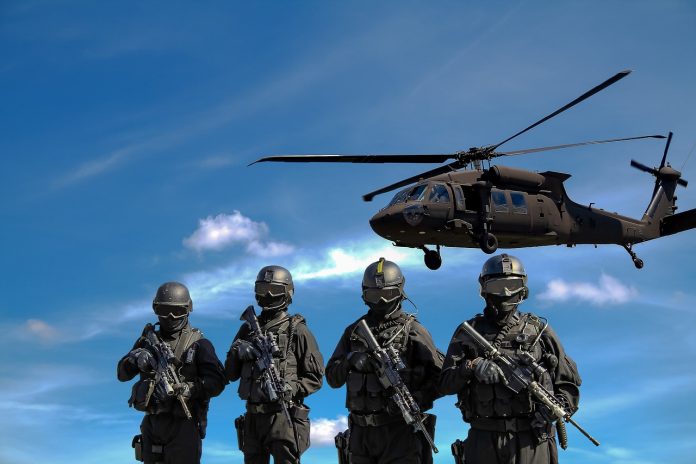By Ricardo Filipe, a policy fellow with Young Voices Europe based in Setúbal, Portugal. He specialises in European policy. Ricardo is also an active member of the Portuguese Liberal Party (Iniciativa Liberal) and the National Coordinator for Students for Liberty in Portugal.
With the war in Ukraine extending past the 2-year mark, the threat of escalation is more pressing than ever before. This has led many European nations to pay more attention to their defence policies and capabilities, leading to a wide range of theories of what European defence should look like.
Europe can no longer keep relying on the U.S. for its defence, a risk exacerbated by Donald Trump’s recent pledge not to defend any NATO ally skimping on their defence spending. Despite the characteristically dramatic and forthright nature of Trump’s position, at its heart is a somewhat reasonable point: no single NATO member should have to carry the entire alliance on its shoulders indefinitely, no matter how powerful.
What could Europe’s rearmament look like?
There are several major ongoing issues for European defence forces: How will the continent replenish its depleted stocks of weapons and materials? How can we entice citizens to join the military to help tackle recruitment crises, or at least be prepared to do so in the case of war? Should we form a European Federal military?
A Federal military or an alliance of states?
While the idea of a European army isn’t in the cards at the moment, its spectre looms ever-present in times of crisis and geopolitical tension. The European Union currently makes use of the Common Security and Defence Policy (CSDP), which among other missions, ensures self-defence cooperation between the member states of the EU.
Within the EU, several forces are composed of input from various countries, such as the European Gendarmerie Force, the European Maritime Force, and EUROCORPS. However, it is important to mention that these forces answer to the member states that fill their ranks, and not to the EU itself. Should we try to consolidate these forces into a European army?
In short, it’s a bad idea.
Not only is the question of sovereignty a major issue for European nations, but it also separates defence forces from their families and communities, creating a sense of loyalty to the union rather than those they are supposed to protect.
The connection between the defender and the defended instils the soldiers with the will and determination to engage any foreign aggressor, being that they aren’t fighting for a flag or the figurehead of a distant political organisation, but rather for their home, for their friends, and for their loved ones. This will, in its own way, lead to greater support from the local communities, being that they see the military as their fellow man, and not a distant force responding to a far-off European bureaucrat.
In case of an attack on the EU, all states would respond within the standards of an alliance, leading to the deployment of national forces alongside other European nations, led by a joint task force from the allied nations.
Forging the Shield of Europe
Currently, there are two primary perspectives on how Europe should re-fill its stockpiles and update its equipment. These two different strategies are being proposed by the two most influential countries in the EU: France and Germany.
France’s president, Emmanuel Macron, defends a greater increase in EU funding for defence-related industries, stopping all kinds of foreign purchases of arms and defence equipment. This stance would put European defence into a restrictive protectionist doctrine.
In contrast with this idea, German chancellor Olaf Scholz defends that the European states should be free to choose what defence equipment they pretend to supply their defence forces with. This approach offers a more free-market solution for equipping and supplying the militaries of the EU.
While the first solution might allow for quicker rearmament, it comes at the cost of diversity within the European arsenal and the substitution of the most cost-effective product for the job by what is funded by the EU.
China’s military is tapping into EU-funded research.https://t.co/83YZvkjtRU
— POLITICOEurope (@POLITICOEurope) June 28, 2024
The New Face of the European Soldier
With the reforging of the European militaries, it is important to think about the kind of soldier who will be the bearer of our shield.
Currently, the idea of conscription has resurfaced in many European nations, with differing degrees of success. Throwing more bodies at the problem is a temptingly quick and simple solution but it creates a major issue: the soldier is no more than a slave to their nation.
A conscript often is someone who doesn’t want to be in the military, requiring the use of force and vague nationalist propaganda as incentives to compliance, which creates an inhumane image of the soldier by the military institutions leading them to consider them more as numbers and not individuals, and in turn leads to the rise of criminal activity within the ranks, to a collapse in discipline and to desertion.
This isn’t the image that I, or anyone who values liberal-democratic values, should want for our guardians. The European soldier must take this role by choice. They must be well-equipped and highly motivated.
Any need to create a reserve force with the capability to rise up in the face of foreign aggression promptly should be instituted through voluntary activities, education, or training. In this manner, the population of the European nations would have the capacity to rise to the occasion if a threat appears, be it military or otherwise.
War is a terrifying prospect, one that we should always try to avoid. However, in seeking to prepare against a potential aggressor, we must tread carefully so that we don’t sacrifice the very values we wish to defend.
Disclaimer: www.BrusselsReport.eu will under no circumstance be held legally responsible or liable for the content of any article appearing on the website, as only the author of an article is legally responsible for that, also in accordance with the terms of use.













